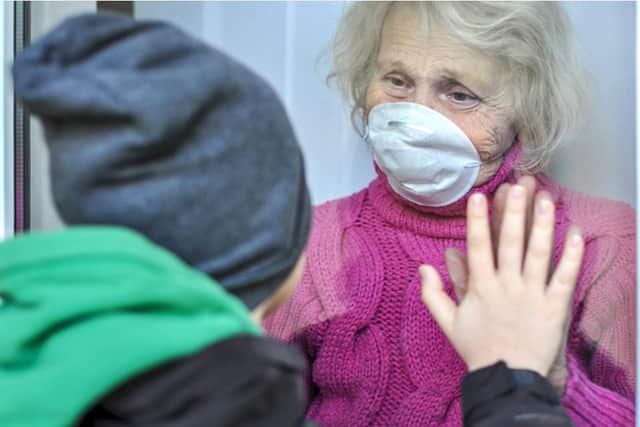Do I need to go back into shielding? Rules for vulnerable groups explained for Tier 1, Tier 2 and Tier 3 Covid local alert levels
and live on Freeview channel 276
People who are clinically vulnerable to Covid are not currently being asked to go back into shielding in England, despite the rising infection rates.
Since the shielding was introduced in March, several protective measures have since been put in place which have reduced the need for such restrictions, including the rule of six, better data on infection rates and the recently introduced local Covid alert levels.
Advertisement
Hide AdAdvertisement
Hide AdAs such, the government is not recommending vulnerable people return to such strict measures as were previously in place, but precautions should still be taken to avoid the risk of infection.


Additional advice for vulnerable groups
Updated government guidelines now provide additional advice to the clinically vulnerable over and above local Covid alert level rules.
The guidance aims to strike a better balance between practical steps to keep people safe, and reduce the potentially harmful impacts on mental and social wellbeing that were associated with the previous strict shielding restrictions.
The updated advice differs depending on whether your local area is classed as ‘medium’ (tier 1), ‘high’ (tier 2) or ‘very high’ (tier 3) Covid alert.
Advertisement
Hide AdAdvertisement
Hide AdYou can check which tier applies where you live using the government’s new online postcode checker.
What does the government advise?
The shielding advice is tailored according to the Covid alert level in your local area, in accordance with the new three-tier system:
Tier 1 - Medium alert
- Do not meet in a group of more than six, either indoors or outdoors
- Limit unnecessary journeys on public transport
- Work from home where possible
- Children should still attend school
Additional advice recommends strictly maintaining social distancing and meeting people outside if possible. You should also try to keep the number of social interactions that you have low, as the fewer social interactions you have, the lower your risk of catching Covid.
Tier 2 - High alert
Advertisement
Hide AdAdvertisement
Hide Ad- Do not meet other households indoors in any setting, including pubs and restaurants
- Reduce the number of different people you meet outside
- Avoid travel except for essential journeys
- Work from home where possible
- Children should still attend school
Additional advice recommends keeping the number of social interactions that you have low, but you are encouraged to continue to go outside with your household, or support bubble, because of the benefits of exercise. If you do choose to meet other households outside of your support bubble, this must be outside, and be in a group of less than six people.
Tier 3 - Very high alert
- Working from home is strongly advised, along with staying at home as much as possible
- Avoid all but essential travel
- Reduce shopping trips, and use online delivery where possible. Alternatively, ask people in your household, support bubble or volunteers to collect food and medicines for you
Advertisement
Hide AdAdvertisement
Hide Ad- People in areas of very high alert can only meet friends and family from another household in certain outdoor public spaces, but socialising indoors is banned.
Guidance advises people still continue to go outside for exercise, but should avoid busy areas to minimise the chance of coming into close contact with others. Otherwise, you should stay at home as much as possible.
